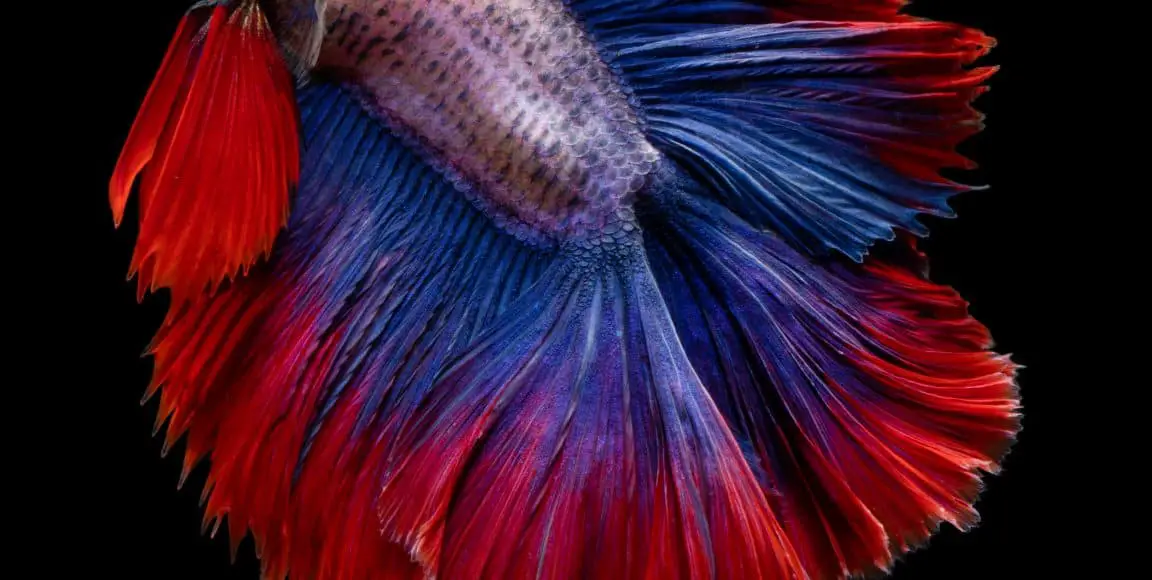Last Updated on December 16, 2020
Taking care of a betta is possible for those who are new to fish keeping. Knowing the origin, characteristics, and needs of this unique fish are important to take care of bettas.
Are betta fishes easy to take care of? Let’s discuss the basics below so you can provide the best for your pet fish.
Table of Contents
Where did bettas come from?
When fish keepers talk about betta fish, the most familiar species that comes to mind is the betta splendens also known as The Siamese Fighting Fish. I discovered these fish in the Mekong Basin of Thailand in Southeast Asia. Their habitat is the rice field paddies, agricultural irrigation canals, streams, and floodplains. They live in water which is calm and not too deep. Climate is of the tropical range. Sunlight is intense but the lush plants in and around these bodies of water serve as shelter for the betta. Betta fish also lives in other Southeast Asia countries.
What can we learn from knowing its natural habitat?
The climate in Southeast Asia is predominantly tropical. The two seasons is the hot summer season and the wet rainy season. During the summer months, water levels drop and betta fish have evolved to survive this situation. They can live in small amounts of water which is very low in oxygen. They can do this because of the labyrinth organ which is a great evolutionary adaptation. This allows bettas to gulp air from the water’s surface and absorb the oxygen through the labyrinth organ.
This is where the idea that betta fish can survive in a small amount of water came from. This is not a reason to keep your betta fish in such a condition. This is a survival situation that doesn’t occur for the whole duration of a betta fish’s life.
As the rainy season comes, water replenishes and the natural environment of the betta once again regain so much water. This turnover of water flushes away the accumulated substances during the hot season. The Betta fish need a good environment to thrive and our goal as owners of these majestic pets is to provide that.
What size of aquarium is best for a beginner in taking care of betta fish?
A 5 gallon tank is the recommended minimum for a beginner in taking care of one betta fish. This size allows more room for error which, as beginners, we usually have to learn from. A 5 gallon tank will give space for a heater, a filter, and give your Betta fish a territory it can call its own.
What temperature is needed for a betta?
Betta fish came from a tropical country of origin and we should simulate this temperature range in the home we make for a betta to live in. Your pet betta fish will benefit from the optimal temperature range between 78 to 80 degrees Fahrenheit or 25 to 27 degrees Celsius. A temperature lower than this will slow down your betta fish’s metabolism. It will compromise its immune system making it more prone to diseases. A higher temperature will speed up the betta’s metabolism which will shorten its lifespan.
A heater with a built-in thermostat does the job in maintaining this temperature range in your betta fish’s aquarium. Choose an aquarium heater suited for the volume of your tank. An inadequate heater will work more and use more electricity. A heater enough for the volume of your fish tank will not have to work as much. A 5 to 10-gallon tank will usually need a heater size of 25 to 75 watts.
Choose heaters that have a guard around the glass just in case your betta fish rests on it. Bettas are known to rest on top of things such as aquarium decor, plants, rocks, and heaters. This guard will prevent direct contact with the glass which may be hot. Betta fish are sensitive to temperature and this will be a very unlikely scenario but just be on the safe side for your betta.
Unplug your heater when doing aquarium maintenance and water changes to avoid overheating and accidents.
How long does a betta fish live?
A betta fish can live for 3 to 5 years when given the best environment to live in.
The betta fish you buy from the pet store will probably be around 6 months to a year old. It takes time for the betta’s colors to develop. Fish breeders will not put the fish for sale unless the colors are well-developed because this is one reason people buy betta fish.
Related: Betta Fish Care in a Nutshell
How deep should the water be in my betta fish tank?
We recommend 12 inches or 1 foot, but your tank’s measurement will mostly dictate the maximum depth of water it can hold. As long as your betta fish have a lot of room to swim around in and that it has easy access to the water’s surface then it is an okay depth.
Just know that betta fish can jump out of a tank. They have learned this ability through an evolution where they jump from one puddle to another in the wild in search of cleaner and more water. Avoid this from happening by investing in a good lid for your fish tank.
More water is better. Remember that the less amount of water there is then the faster the harmful substances will accumulate.

Do I need a filter for a single betta fish in my aquarium?
A filter will provide mechanical filtration by sucking up fish waste and uneaten food. These will then get trapped in the filter media or sponge. These have a huge surface area for good bacteria to colonize. These bacteria provide biological filtration.
Fish pee, fish poop, decaying plants, and uneaten food release ammonia. Imagine living in your own waste. That is just horrible. This is where good bacteria come into play.
Ammonia spikes happen when ammonia goes out of control and increases in your aquarium. Ammonia is lethal to fish and causes burns in gills and internal organs. Nitrosomonas bacteria will eat Ammonia and convert it into Nitrites (NO2-). Nitrites are less toxic but still harmful to fish. Nitrobacter bacteria will eat Nitrites and turn it into Nitrates which is far less toxic to fish. These substances are not easy to see and you need test kits to determine the ammonia, nitrites, and nitrates levels.
One important factor to consider if the flow output of the filter you choose. Make sure it doesn’t create too strong a flow in your fish tank. Too strong currents will blow away and whip around your betta fish. This constant struggle will exhaust your betta fish and lead to stress and lead to death. Choose a sponge filter which is the best option for a betta fish because it doesn’t create so much turbulence in the fish tank. A hang on a back filter with an output control is also a great idea.
Filters also provide water surface agitation important for the oxygenation of the water column. Your betta fish also has gills that it can use to absorb oxygen from the water column. Surface agitation and water flow from the filter allow the water to constantly move around the fish tank preventing “dead spots”.
Do I need to put live plants in my fish tank?
Live plants provide a very natural environment for your betta fish. It will give it more obstacles to swim and play through. Plants also provide shelter for your betta fish. Aside from the aesthetic benefit, plants also help keep the aquarium water clean. Plants will absorb ammonia (NH3) and Nitrates (NO3-) and use these as building blocks for growth. Plants also perform photosynthesis during exposure to light. The byproduct of this process is Oxygen and they absorb Carbon Dioxide produced by the fish. At night the process is reversed though so make sure to have adequate water agitation to let gas exchange occur.
Choosing to take care of live plants will affect the choice of the substrate which is the material you will put on the bottom of your fish tank. Aquatic plants which are root feeders will need a nutrient-rich substrate such as aqua soil or aquarium soil. There are plenty of brands to choose from and these are safe for betta fish. Floating plants are a good idea as well but be sure to give your pet direct access to the water’s surface.
If you do not want to take care of live plants, then imitation plants are available. Just choose silk plants to avoid injury to your pet fish.
How often should I clean my aquarium?
Partial water changes of 20-25% every week is good for a filtered 5-gallon tank. You need to clean the smaller containers more frequently which can be a hassle for beginners and stressful to betta fish.
What should I feed my pet fish?
Bettas are carnivorous and will greatly enjoy such a diet. Food pellets made specifically for bettas are the beginner’s best option. This has high protein content and not many fillers which may lead to digestion issues along the way.
If your local fish store can provide you live foods such as daphnia, brine shrimp, bloodworms (as treats only), and mosquito larvae then you can add them to your betta fish’s diet. A varied meat-based diet will provide your betta with the nutrients it needs.
Avoid overfeeding. Only give food that your Betta can finish within 3 minutes.
Can I put other fish with my betta?
For beginners, we recommend starting with just a betta fish. Once you have mastered the basics of taking care of a betta fish, you can try researching tank mates for betta fish. This takes more experience to successfully pull off. Research compatibility of fish and other creatures your betta can live with.
Bettas are highly territorial and will prefer a 5-gallon tank for itself. It will not become lonely because there are no other fish around. Adding another Betta is trouble waiting to happen. They will most probably fight and injure each other. Your betta will love the solitude of a 5-gallon tank. Its interaction will be with you when you approach the tank and give food.
We have covered most of the basic information needed to take care of a betta fish. We wish you luck in the hobby and may it give you years of joy and appreciation for the splendid Betta.
Related: Do Fish Ever Fart?
